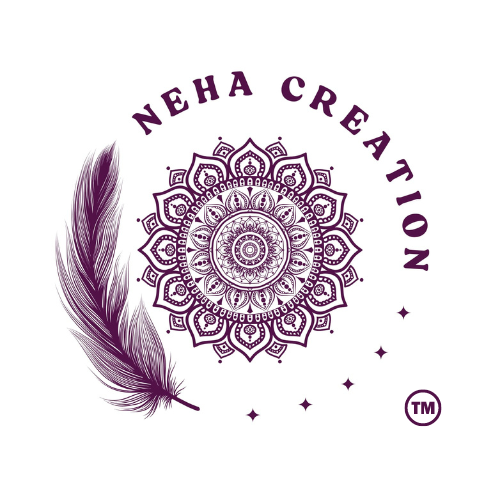Mandala art is a timeless expression of symmetry, balance, and mindfulness. Rooted in ancient spiritual traditions from Hinduism and Buddhism, mandalas have evolved beyond sacred spaces into modern living rooms, digital screens, and global art galleries. Today, we stand at a creative crossroads—where traditional mandala art meets cutting-edge digital technology, opening up endless possibilities for both seasoned artists and curious beginners.
This article explores how Mandala art has beautifully blended tradition and technology, transforming a spiritual ritual into a global movement powered by apps, software, online courses, and digital tools.
The Traditional Roots of Mandala Art
Mandalas date back thousands of years. In Sanskrit, “mandala” means circle—a symbol of unity, eternity, and wholeness. Traditionally, mandala drawings were used in religious ceremonies, meditations, and temple architecture. Monks in Tibet, for instance, would spend days creating intricate sand mandalas only to brush them away afterward, symbolizing impermanence.
Artists using pen and paper still follow this ritualistic discipline, creating symmetrical designs by hand, one line at a time. The process is meditative, often used for stress relief, focus, and inner healing.
The Rise of Digital Mandala Art
In recent years, digital mandala art has gained massive popularity. With the rise of tablets, styluses, and mobile apps, artists can now design perfect geometric mandalas without needing a compass or ruler. This has made the art form more accessible and fun, especially for beginners and hobbyists.
Digital mandalas are used in wallpapers, animations, therapy apps, online courses, NFT art, and even fashion design. The fusion of sacred geometry with digital tools is not just trendy—it’s transformative.
Tools of the Trade: From Brushes to Styluses
Traditional Tools:
Digital Tools:
-
iPad with Procreate or Adobe Fresco
-
Android tablets with Autodesk SketchBook
-
Digital mandala apps like Amaziograph, Mandala Maker, or Radial
-
Graphic tablets like Wacom
These digital platforms allow layering, symmetry guides, color fills, and undo options, making mandala creation quicker and more precise without losing its meditative charm.
Mandala Art in the Online World
The internet has given mandala artists a global stage. From YouTube tutorials to Instagram reels and Etsy shops, the world is now a digital gallery. Artists can:
-
Sell digital mandala prints
-
Offer online mandala workshops
-
Launch downloadable coloring books
-
Create NFTs based on mandala patterns
Platforms like Pinterest are flooded with mandala inspiration boards, while online marketplaces thrive on customizable mandala merchandise like t-shirts, tapestries, mugs, and mobile covers.
Benefits of Combining Tradition with Technology
1. Accessibility
Anyone with a smartphone or tablet can try mandala art. No expensive supplies, no art school required.
2. Precision & Symmetry
Digital tools offer perfect symmetry with minimal effort, making the process smooth and satisfying.
3. Creative Freedom
You can try different styles—neon mandalas, kaleidoscope patterns, geometric grids, or watercolor effects—all digitally.
4. Eco-Friendly
Digital mandala art eliminates paper waste, making it a sustainable option for environmentally conscious artists.
5. Income Opportunities
Artists can monetize their digital mandalas through print-on-demand stores, Patreon memberships, and online art courses.
Traditional vs. Digital Mandala Art: What’s Better?
There’s no competition—just a fusion of two worlds. Traditional mandalas emphasize patience, control, and the spiritual journey. Digital mandalas celebrate freedom, experimentation, and accessibility. Many artists now blend both techniques—drawing with ink and then enhancing digitally.
In fact, most successful mandala creators use both mediums:
-
Sketch the base manually
-
Digitize the design
-
Add color, texture, and effects
-
Share or sell it online
Mandala Art for Mental Wellness in a Digital Age
In today’s fast-paced, screen-heavy world, mandala art remains a mental wellness tool, whether hand-drawn or created digitally. Studies show that creating mandalas can:
Several meditation and wellness apps now include mandala coloring options as part of their stress-relief packages. These digital mandalas are often interactive and personalized, making them ideal for people of all ages.
The Future of Mandala Art: AI and Virtual Reality
Imagine wearing a VR headset and creating 3D mandalas in mid-air. Or collaborating with an AI that suggests symmetrical patterns as you draw. These aren’t futuristic fantasies—they’re already happening.
AI tools like Deep Dream and Wombo now generate AI-powered mandala patterns, while VR sketching apps like Tilt Brush allow immersive mandala art experiences. This future of Mandala art is interactive, collaborative, and limitless.
Conclusion: Embrace the Fusion
Mandala art has come a long way—from ancient temples to touchscreens, from sacred rituals to digital expressions. Whether you prefer the authentic feel of pen and paper or the ease of an iPad stylus, both worlds offer value, beauty, and mindfulness.
Embrace this fusion. Use technology to enhance tradition. Let every circle you draw—manual or digital—bring you closer to balance, creativity, and joy.



